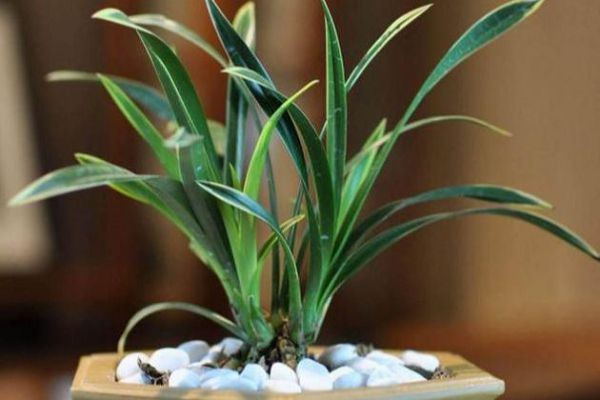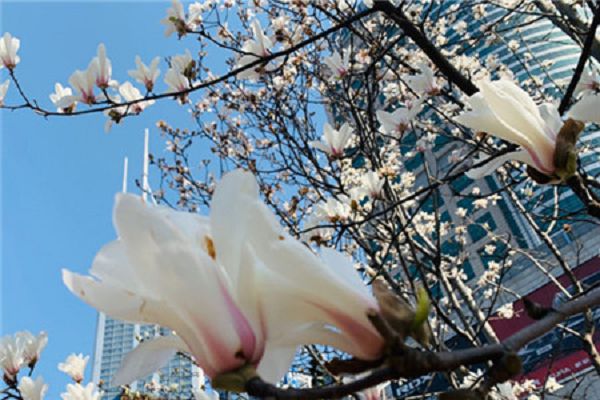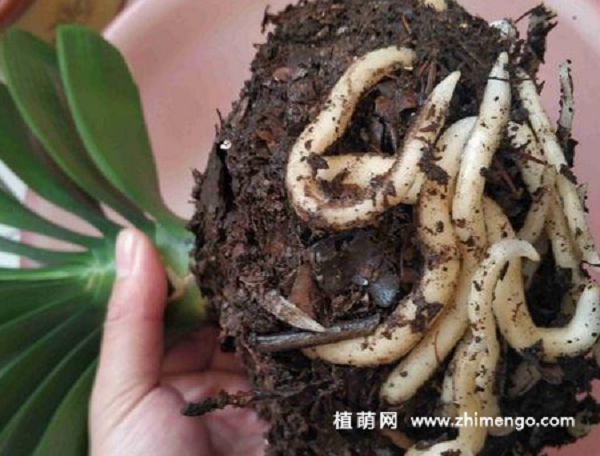The reason that the orchid leaf tip blackens, how to do the orchid leaf blackening?

Orchids are flowers that many flower lovers like to breed, and there are many kinds of orchids, and all kinds of orchids have their own unique charm. Raise a basin of quiet orchids, elegant and chic, put in the study or living room can instantly enhance the taste of the home environment.
Orchids are very good flowers, but it is easy to cultivate orchids, but it is not easy to raise orchids well. Among them, watering, fertilization, light, and temperature are all great knowledge. today, Hua'ergu will come to discuss with you a disease problem in the cultivation of orchids, that is, the blackening of the leaves of orchids. This is also an issue that many orchid lovers are more concerned about. I hope you can learn something you need from it, and you can apply it when you encounter problems.
Before discussing the problem of the blackening of the leaves of orchids, we first classify some of the reasons that lead to the blackening of the leaves of orchids: the blackening of leaves caused by natural causes, the blackening of leaves caused by mismanagement, and the blackening of leaves caused by bacterial infection. Let's analyze the reasons and deal with them one by one.
I. Natural factors
The blackening of orchid leaves caused by natural factors is often caused by low air humidity, especially in winter. This is due to the water imbalance of orchid leaves caused by insufficient air humidity. The same problem also occurs in periods of high temperature and heavy rain and great climate change, which may also be caused by the poor air quality of the environment.
Therefore, we can increase air humidity in the form of spray to make orchids grow in a suitable environment, which can effectively prevent the blackening of leaves caused by humidity problems. The cultivation of orchids had better be placed in a place where semi-shade will not be drenched by Rain Water, which can reduce the blackening of leaves caused by sudden climate change to a certain extent. If it is the air quality problem, the average household environment can not be changed.
II. Improper management
The blackening of orchid leaves caused by improper management is generally caused by excessive light, insufficient light, too much watering, too little watering, excessive fertilization, excessive spraying and so on. These reasons can be changed artificially.
Therefore, the cultivation of orchids in semi-shaded or shaded places with sufficient light can prevent the leaves from blackening due to light problems; prevent orchids from getting drenched by Rain Water, watering according to dry and wet or keeping slightly moist suddenly can make orchids black from water damage; using thin fertilizer frequently and using special fertilizer for orchids can effectively prevent fertilizer damage Drug prevention and treatment must be in accordance with the instructions, diluted to an appropriate concentration before spraying, these problems are actually man-made control, we only need to be careful to avoid the phenomenon of leaf blackening.
III. Bacterial infection
The phenomenon of leaf blackening caused by bacterial infection is generally more serious, which will lead to more and more serious blackening phenomenon. If not timely control, it will lead to serious plant growth problems. However, the prevention of leaf blackening caused by bacterial infection is generally more important than treatment, because once a leaf infection occurs, it is not easy to prevent and cure it. Next, let's introduce one by one what problems will lead to the blackening of orchid leaves.
1. Brown spot
This is the most serious scorched tip disease caused by bacterial infection, which shows that the spot is brown, and it will appear in the early stage of the disease, such as waterlogged brown spot scalded by boiling water, and it expands very fast, which will lead to the death of the whole leaf and highly contagious.
2. Anthrax
This is a scorched tip disease caused by fungi. To determine whether it is anthrax, we can observe whether there are several wavy horizontal black belts on the leaves. This disease can not be eradicated by pruning diseased leaves, but is also a more serious scorch tip disease.
3. Black spot
This is caused by fungi, one of the common orchid leaf diseases, this disease spot is generally round, appear on the leaves and edges, when the disease spot is serious, it will form a piece, resulting in the ornamental effect of the leaves weakened.
4. Leaf blight
Leaf blight is also caused by fungal infection, which generally causes the tip of the leaf to turn gray in the later stage of the disease, the location of the disease will wither, the place at the junction with the normal leaf will show dark brown, and it will shift to the interior with the time of the disease. in severe cases, the whole leaf will dry up, and the number of diseased leaves will increase.
5. Tip blight
This is also due to the scorch tip disease caused by fungal infection, which shows that the dead parts are grayish yellow, but unlike anthrax, there are no banding marks. Dark brown markings appear at the junction of the blight tip and normal leaves.
The above five common diseases generally do not appear single, many times there will be multiple symptoms at the same time or alternately, so these bacterial and fungal infections are difficult to treat, it is best to prevent, as far as possible to avoid these diseases. In case of these diseases, we need to actively prevent and control them. Now let's introduce the methods of prevention and control.
IV. Disease prevention and control
1. Pruning diseased leaves
Cut off the leaves that have been infected and diseased, and be sure to cut off the whole or part of the discolored leaves thoroughly. If it is a partial pruning, we must cut more than 1 cm more than the part with normal leaf color. Prevent re-infection of pathological changes and become the source of disease.
2. Symptomatic prevention and treatment
Before taking medicine, we need to distinguish the symptoms before we can prevent and cure the symptoms. Panu single method refers to the third part. Among them, what we mainly confirm is the distinction between bacterial infection and fungal disease.
If it is caused by bacterial infection, we can use agricultural drugs such as streptomycin, Kesha and Yekuning to prevent and cure it. If it is caused by fungi, we can use methyl topiramate, chlorothalonil and so on. If we really do not know how to distinguish and cannot identify the cause, we can use the drugs of bacteria and fungi together to achieve twice the result with half the effort.
3. Deal with it in time
For the occurrence of leaf diseases, we must actively, to deal with in time, otherwise small problems will become big problems, delay the best time to save will lead to the death of orchids. We should pay attention to active prevention in our daily life. We can spray medicine regularly since early spring, spraying every half a month, fungal and bacterial drugs should be used together or separately in turn, prevention is the best way.
4. Points for attention
Do not spray water on the leaves of diseased plants that have blackened leaves. If spraying water will cause the disease to develop more rapidly, the germs will spread more quickly with the running water. Usually there is a lot of dust on the leaves of orchids, we need to clean up in time, so that better photosynthesis of leaves can promote plant health and reduce the chance of disease.
Related
- Is the orchid suitable for indoor use? Is it good for the body?
- How to prevent the empty root of orchids?
- What to do after the crab claw orchid is withered?
- Why are the leaves of orchids always yellow? Fertilizing and watering.
- Can the root of the gentleman orchid be saved if it is rotten?
- Diagnosis and treatment of cotton-blowing beetle insects in Cymbidium
- There is a way for a gentleman's orchid to rot.
- What is the most suitable temperature and humidity for the orchid?
- How to raise a gentleman's orchid? Cultivation techniques of Cymbidium
- How to prepare the nutritive soil for the cultivation of Cymbidium



